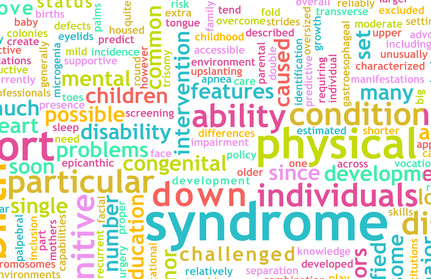
by Nitin Chhoda PT, DPT | Sep 16, 2015 | Electronic Medical Records, Healthcare Practice Management, ICD 10, Medical Billing, Physical Therapy Billing
ICD-10 implementation means changes at all levels. One of the first responsibilities for managers will be to analyze the practice environment and personnel to determine specific needs to bring the practice into compliance and readiness for implementation. The entire process will require many managers to assume duties with which they’re unfamiliar or require them to step out of their comfort zone.
 Managers will take on the role of overseeing and coordinating the implementation of ICD-10 and that will include contacting vendors, payers, clearinghouses and billing professionals. Contracts will all need to be evaluated, revised, updated and receive final approval before the official implementation date. New policies for employees will need to be revised, distributed and a signed copy returned.
Managers will take on the role of overseeing and coordinating the implementation of ICD-10 and that will include contacting vendors, payers, clearinghouses and billing professionals. Contracts will all need to be evaluated, revised, updated and receive final approval before the official implementation date. New policies for employees will need to be revised, distributed and a signed copy returned.
Budgetary concerns will occupy a large part in managers’ responsibilities. Operating funds must be set aside to account for the inevitable reimbursement delays to come. There will be numerous software and hardware updates, purchases and IT considerations. Testing is a crucial part of preparation to ensure that the practice can communicate appropriately with others in the system. It’s a process that will take time and will rely on the readiness of other entities.
The transition to ICD-10 will require training and education for all staff members and sufficient money will need to be appropriated. Implementation will affect staff members in different ways. Managers will be responsible for determining the level of education each individual requires, ensure staff participation and that they’re fluent upon completion. Managers will want to explore various instruction methods, from online options to on-site instruction. Not all staff will need the same level of training.
The workflow in practices and the billing department will experience delays. These should be expected. Staff training and system testing will require a significant amount of time, resulting in a loss of productivity prior to implementation. It may be necessary to hire extra staff in various departments to alleviate back-up and loss of productivity. Additional personnel may be required for up to six months following implementation.
Significant risk accompanies ICD-10 implementation. HIPAA compliance for securely transmitting medical information is critical. Sufficient safeguards must be in place. Part of the implementation process involves how information will be stored and manipulated by those within the practice and entities with which the practice works.
The additional documentation and coding required by ICD-10 places much more patient information at risk and security measures must be addressed. Risk management also extends to potential loss in revenues after the conversion. The best laid plans may encounter snags and delays. A contingency plan to handle any problems will be essential.
The implementation of the new coding system is a major undertaking at all levels of the practice. It will require new methods, practices and policies. Medical practice managers will be extremely busy ensuring that staff receives training, the revenue flow experiences minimal disruptions, and the practice is in compliance for the ICD-10 conversion. During the transition, managers should take care not forget to obtain the ICD-10 training they need.

by Nitin Chhoda PT, DPT | Sep 4, 2015 | Electronic Medical Records, ICD 10, Medical Billing
 The rules of coding for ICD-10 have been established in cooperation by the American Hospital Association (AHA), the American Health Information Management Association (AHIMA), the Centers for Medicare & Medicaid Services (CMS) and the National Center for Health Statistics (NCHS). It’s a standard to which all clinicians must adhere.
The rules of coding for ICD-10 have been established in cooperation by the American Hospital Association (AHA), the American Health Information Management Association (AHIMA), the Centers for Medicare & Medicaid Services (CMS) and the National Center for Health Statistics (NCHS). It’s a standard to which all clinicians must adhere.
Reviewing The Basics
ICD-10 encompasses 21 chapters and expanded code options that have been reorganized and expanded. Injuries are described by site first and then by type. They include laterality, greater specificity and combination codes.
ICD-10 codes are now identified with an alpha-numerical system that can include up to seven characters and the first will always be a letter. The letters I and O are not used, as they can easily be confused with the numbers 1 and 0. Letters aren’t case sensitive.
The first three identifiers represent the category, the next three describe the anatomical location and severity, and the last is an extension that identifies if it as the first or subsequent encounter, or the result of a previous injury or disease. X is used as a placeholder in some codes.
Injuries are grouped by body part rather than injuries. Clinicians will focus on documenting the current complaint of the client. Never assume that “standard” treatment has been provided or code on a suspected diagnosis. Payers just want the facts of what’s readily observable.
Practitioners will need to document variables that were not required under ICD-10. Clinicians will need to include data on all external causes that led up to the actual injury, the exact location of the injury, and the patient’s actions at the time of the injury.
Documentation will also require information about the environment in which the injury took place, and any measures the patient has taken to alleviate the problem. Additional data must be included on any complications, the results of tests and exams, and very detailed data on the treatment plan.
Conventions
The conventions for ICD-10 have an alphabetic index of terms and codes that may apply. It’s broken down into four parts: Index of Diseases and Injury, Index of External Causes of Injury, Table of Neoplasms, and Table of Drugs and Chemicals. ICD-10 also has a tabular list that divides codes into different chapters that’s based on condition or body system.
ICD-10 coding conventions dictate that clinicians record the underlying or casual condition first. This should be followed by the condition displayed. Up to 12 diagnosis codes can be included for accurate representation of all conditions related to the patient’s visit.
A new coding convention for ICD-10 provides laterality in reporting. Clinicians now have designations for right, left, bilateral and unspecified. Coding can then be specified for the type of injury, disease or condition, along with an even more finely detailed description of the affected area.
Medication conventions have also been expanded. An example of this is drug under-dosing, a concept that doesn’t exist in ICD-9 but can be coded for under ICD-10. Many of the new codes reflect changes in terminology and technology. Some codes have been updated, while other terms have been eliminated or disassociated from specific conditions.
Even punctuation is addressed in the conventions. Specific guidelines have been established for the use of parentheses to designate supplementary words and terms that should be documented, but won’t change the diagnosis. Clinicians can differentiate between signs, symptoms and unspecified codes.
While ICD-10 codes are extensive and comprehensive, the good news for practitioners is that they generally won’t have to contend with the entire complement of code options, only those that affect their specialties. For instance, physical therapists and dermatologists won’t be coding for the same types of disease or injuries.

by Nitin Chhoda PT, DPT | Aug 26, 2015 | ICD 10, Medical Billing, Physical Therapy Billing, Physical Therapy Management, Physical Therapy Marketing, Physical Therapy Software
 The new documentation requirements for ICD-10 have a focus on the specifics. Payers want as many in-depth details as possible for each claim so they can decide if they’ll make the reimbursement or if the financial responsibility can be shifted elsewhere. Clinical documentation is a critical element for clinician reimbursement.
The new documentation requirements for ICD-10 have a focus on the specifics. Payers want as many in-depth details as possible for each claim so they can decide if they’ll make the reimbursement or if the financial responsibility can be shifted elsewhere. Clinical documentation is a critical element for clinician reimbursement.
The American Academy of Professional Coders (AAPC) estimates that only 37 percent of current clinician documentation provides enough detail to meet the stringent reporting requirements of ICD-10. Documentation will require more detailed information on topics that include the what, when, where and why of injuries, diseases and conditions.
Typical information about the client’s height, weight and vital signs will remain, but the details of an injury and surrounding circumstances are much more specific. In the previous example of the woman who suffered shoulder pain and headaches after an accident on a cruise ship, the following information will be required under ICD-10 coding.
- All external causes that led up to or contributed to the injury;
- The exact location of the injury on the patient’s body;
- The patient’s actions and activities at the time of the injury and after;
- Injury codes require a character extender to identify the type of encounter and if the patient sought medical attention;
- Data will be required to identify where the client sought medical treatment, any tests that were conducted and referrals that were made;
- The patient’s location when the injury took place or when the symptoms appeared is essential and ICD-10 provides data that narrows the location to a specific room, environment or mode of public transportation, including cruise ships;
- Applied specificity is required for any number of accidents and injuries to document the immediate symptoms experienced by the patient at the time of the incident, as well as ongoing symptoms, severity and frequency;
- Clinicians must indicate any methods the patient has used for pain relief or to alleviate the problem, from over the counter medications to hot and cold therapies;
- Documentation must identify if the pain or symptoms from the injury are chronic or acute;
- Any related complications encountered;
- The result of hands-on examination and any tests ordered;
- A detailed account of the treatment plan, including the symptoms that will be addressed and how.
Complete and detailed documentation is essential for reimbursements and Medicare requires clinicians to maintain records on all of a patient’s health and medical history both past and present. A number of variables must be documented that were not required under ICD-9 code sets.
Clinicians will need to exercise caution to ensure each item is thoroughly documented with the corresponding code. The new documentation requirements have a focus on the immediate complaint and no suspected diagnosis must enter the equation, only what can be clearly determined from the available information.

by Nitin Chhoda PT, DPT | Aug 24, 2015 | ICD 10, Medical Billing, Physical Therapy Billing, Physical Therapy Documentation, Physical Therapy Marketing, Physical Therapy Software
 More codes, greater specificity and increased reporting regulations, combined with coding rules and categorization changes, are all leading to significant increases in documentation time when ICD-10 is fully implemented. It’s estimated that clinicians will experience a 15 percent increase in their documentation time and that’s a conservative number.
More codes, greater specificity and increased reporting regulations, combined with coding rules and categorization changes, are all leading to significant increases in documentation time when ICD-10 is fully implemented. It’s estimated that clinicians will experience a 15 percent increase in their documentation time and that’s a conservative number.
Many ICD-10 codes are very similar except for one or two differences, while other codes are only differentiated by which side of the body the problem affects. Searching with a GEM may turn up no results or thousands. Even practitioners who have acquired ICD-10 training and use a computer assisted search tool will face challenges when locating the exact code that’s needed.
Productivity is expected to drop by up to 10 percent due to physician queries from billers/coders. The potential for denials and the need for additional management of claims will affect revenue flows. Very real problems will arise with clinician queries using keywords. The following example outlines a potential patient complaint and the results of a keyword search.
Subjective:
Mrs. Johnson was on vacation aboard a cruise ship and was walking in the gift shop when a vase fell on her right shoulder. She has had pain in the right shoulder since then. At the time that this injury occurred, she did not consult with a healthcare provider; she thought it would just go away on its own. After a few days, the pain seemed to get worse, and she started noticing more trouble reaching up and to the side. Also, ever since the incident, she has been suffering from chronic headaches. The patient complains of severe pain across the insertion of the supraspinatus. Traditional over the counter medications do not relieve the headache or the shoulder pain. Past medical history is unremarkable. She followed up with her primary care physician, who referred her to physical therapy. Patient indicates that no diagnostic tests (i.e – X-rays, MRI) were done so far.
Objective:
The patient weighs 220 lbs. and is 5 feet 4 inches tall. Her blood pressure is 128/86, pulse rate is 72 and respiratory rate is 16. She has full strength in all muscle groups in the upper extremity with the exception of the right middle deltoids, which are 3+ and right supraspinatus, which is 2+. All deep tendon reflexes in the upper extremity are normal. Range of motion is normal in the upper extremity with the exception of right shoulder external rotation (to 25 deg), abduction (to 130 deg) and flexion (to 135 deg). All of these ranges exhibited pain at end range.
Special tests: Right shoulder (+) Neers, (+) Hawkins-Kennedy, (+) IR lag sign with pain.
Cervical range is restricted to 50% for flexion, extension and side-bend. Tenderness and hypertonicity noted at suboccipital area (right>left).
Assessment:
Exam findings are consistent with rotator cuff strain in the right shoulder. Pain, range of motion restrictions, and weakness in right shoulder, with chronic headaches.
Plan:
Physical therapy 3 times a week for 4 weeks for treatment of right shoulder pain, with range restrictions and weakness, with symptoms consistent with rotator cuff involvement. Treatment to also address chronic headaches and neck range restrictions, with therapeutic exercises, therapeutic activities, postural exercises, patient education, joint mobilizations/soft tissue mobilizations, home exercise, and modalities as indicted.
A clinician that searches for the keywords cruise ship will find 233 results in two classification sets and a further search for falling object and right shoulder pain each has 500 references in three classification sets. A more specific search for rotator cuff returns 109 results in four classifications. Results increase with a key word search for physical therapy returning more than 500 results across seven classification sets.
Searching by specific codes will display results for multiple categories ranging from nuclear medicine and obstetrics to mental health, substance abuse and poisoning. The typical practice won’t experience many of the situations described in the new ICD-10 coding, but they must still wade through a morass of potential codes to arrive at the desired data.
Navigating the ICD-10 code set will affect every individual within the practice and clinics can’t rely on GEMs and crosswalks indefinitely. Implementation requires that all staff members receive education and clinicians obtain coding training in their specialty. It will help reduce documentation times and the instances of claim denials under the new codes and documentation rules.

by Nitin Chhoda PT, DPT | Aug 20, 2015 | ICD 10, Medical Billing, Physical Therapy Billing, Physical Therapy Documentation, Physical Therapy Management, Physical Therapy Marketing
A General Equivalence Mapping (GEM) system offers the best industry-wide standard currently available for the forward and backward mapping of ICD – 10 Codes. GEMs can be practically applied as long as clinicians remain aware of their limitations, use them as a starting point, and receive ICD-10 training and education.
A GEM contains an alphabetical index to entries, classification system for procedures, and the appropriate code numbers. The major difference is that GEMs provide clinicians with the ability to forward map from ICD-9 to ICD-10 codes, and backward map from ICD-10 to ICD-9 coding.
An alphabetical list provides the starting point to begin a search for the appropriate code. Just as the words in a language translation guide can contain multiple meanings, the same is true of a GEM. When the index is accessed, it will return as many related items as possible. It’s up to the clinician to narrow the parameters and choose the appropriate code meaning.
 A GEM will return a source code for ICD-10 and ICD-9, along with “flags” that are divided into different categories. Flag identify if the system has identified an approximate, combination or no mapping equivalent. A scenario and choice list are also available to provide more information for combination possibilities and the choice list provides alternatives for a combination entry.
A GEM will return a source code for ICD-10 and ICD-9, along with “flags” that are divided into different categories. Flag identify if the system has identified an approximate, combination or no mapping equivalent. A scenario and choice list are also available to provide more information for combination possibilities and the choice list provides alternatives for a combination entry.
Many terms, procedures and concepts have been changed or included in other categories. Adjunct codes are included to provide additional information about a specific procedure and clinicians may be faced with a combination of codes that must be used to identify a specific procedure.
The GEM results will vary depending upon the entity that created it. Additional options are available to help clinicians narrow the data for further specificity, along with instructional notes to help clarify a patient’s particular situation. GEM mapping between ICD – 10 sets isn’t a mirror copy and there will be discrepancies.
Numerous GEMs exist from multiple sources and clinicians would do well to examine the GEM from their preferred source to ascertain which would be more beneficial and the most applicable within their practice. GEMs return a variety of potentially applicable results for each situation and some are more helpful than others in a particular practice environment.
The number of new codes, greater specificity and multiple options makes the documentation process much more involved, time-consuming and frustrating for clinicians. Searches will result in multiple options that must be examined in-depth to create a match that accurately represents the illness or injury, the type of encounter and the specifics related to an individual patient.
Coders and billers will be using coding books and software systems to make their conversions and many have argued that it may be easier, quicker and more convenient for clinicians to do the same. A GEM can literally return thousands of results for a single conversion query. GEMS are meant to be a short-term solution until clinicians become fluent with the ICD – 10 coding system or design their own crosswalk system.
Utilizing a GEM system will help clinicians ease into the ICD-10 transition, but they should be aware that it isn’t a magic wand or a one-size-fits-all solution. It offers possibilities, potential and helps bridge the gap in coding, but isn’t a definitive solution.
The ability to backward and forward code is the primary attribute and advantage of a GEM system. They’re essentially reference guides that can help clinicians during the ICD-10 transitional period, but should be combined with the clinician’s expert judgment.

by Nitin Chhoda PT, DPT | Aug 17, 2015 | ICD 10, Medical Billing, Physical Therapy Billing, Physical Therapy Management, Physical Therapy Marketing, Physical Therapy Software
A General Equivalency Mapping (GEM) system is available to assist clinicians determine the correct coding options in the ICD-10 system. It’s a necessary and useful tool, but one that has distinct limitations. It provides no substitute for real training. A GEM is a general purpose tool and wasn’t originally developed for coding. It was a means of analyzing data and conducting research and studies.
 GEM is a tool that can be used by clinicians to conduct searches and reverse searches to identify the correct ICD-10 codes in their practice. Translations and conversions can be done between either coding system to the other. Translating ICD-9 to ICD-10 is known as forward mapping, while ICD-10 to ICD-9 is called backward mapping. Searches will turn up approximate matches, possible combinations, and potential scenarios from which to choose and search for more data.
GEM is a tool that can be used by clinicians to conduct searches and reverse searches to identify the correct ICD-10 codes in their practice. Translations and conversions can be done between either coding system to the other. Translating ICD-9 to ICD-10 is known as forward mapping, while ICD-10 to ICD-9 is called backward mapping. Searches will turn up approximate matches, possible combinations, and potential scenarios from which to choose and search for more data.
There are multiple versions available that have been created by vendors and professional organizations. Versions are available from the Centers for Medicare and Medicaid Services (CMS) and the National Center for Health Statistics (NCHS), along with many vendors of EMR software systems. The ease of use will be determined by multiple variables that include the developer, logic and programming used.
The results that the GEM returns are dependent upon the creating entity. Clinicians will receive entirely different coding options depending upon which GEM they’re using. The sheer volume of codes in ICD-10, combined with those that didn’t exist in the old system, means that a given GEM won’t always return the best matches or choices.
The chance of a one-to-one match is very slim, and in certain circumstances the GEM may offer none at all. All search features aren’t created equal and clinicians may find they have to try multiple search terms before the GEM returns any results at all.
It’s imperative that practitioners remember that GEMs aren’t designed to be an exact converter within a clinical setting and even an “exact match” may only be an approximation. Other coding difficulties may arise when differentiating between an initial encounter and a subsequent encounter. Some ICD-10 codes may not offer lateral solutions, which means practitioners will have to create the data themselves.
The imperfections of GEMs can have a significant impact on revenues for practices, making it imperative that clinicians bill and code at the highest possible level whenever practical and prudent. GEM results may not provide an accurate reflection of the clinician’s intent or care episodes.
Any unmapped codes that are encountered will present additional challenges for overworked practitioners struggling to adapt to a new code set and maintain revenues. Examples that reflect no translation between codes are surgical instruments, cardiovascular devices and autopsy. While the latter two are unlikely to arise in the average practice, it still points out the limitations of a typical GEM.
A GEM is a tool that provides a starting point for clinicians and is no substitute for ICD-10 training and education. The GEM can’t think or factor in the many aspects that practitioners must consider when diagnosing and treating a patient. For that, clinicians must rely on their training and unique experience.
Page 5 of 13« First«...34567...10...»Last »

 Managers will take on the role of overseeing and coordinating the implementation of ICD-10 and that will include contacting vendors, payers, clearinghouses and billing professionals. Contracts will all need to be evaluated, revised, updated and receive final approval before the official implementation date. New policies for employees will need to be revised, distributed and a signed copy returned.
Managers will take on the role of overseeing and coordinating the implementation of ICD-10 and that will include contacting vendors, payers, clearinghouses and billing professionals. Contracts will all need to be evaluated, revised, updated and receive final approval before the official implementation date. New policies for employees will need to be revised, distributed and a signed copy returned.

 The rules of coding for ICD-10 have been established in cooperation by the American Hospital Association (AHA), the American Health Information Management Association (AHIMA), the Centers for Medicare & Medicaid Services (CMS) and the National Center for Health Statistics (NCHS). It’s a standard to which all clinicians must adhere.
The rules of coding for ICD-10 have been established in cooperation by the American Hospital Association (AHA), the American Health Information Management Association (AHIMA), the Centers for Medicare & Medicaid Services (CMS) and the National Center for Health Statistics (NCHS). It’s a standard to which all clinicians must adhere.
 The new documentation requirements for ICD-10 have a focus on the specifics. Payers want as many in-depth details as possible for each claim so they can decide if they’ll make the reimbursement or if the financial responsibility can be shifted elsewhere. Clinical documentation is a critical element for clinician reimbursement.
The new documentation requirements for ICD-10 have a focus on the specifics. Payers want as many in-depth details as possible for each claim so they can decide if they’ll make the reimbursement or if the financial responsibility can be shifted elsewhere. Clinical documentation is a critical element for clinician reimbursement.
 More codes, greater specificity and increased reporting regulations, combined with coding rules and categorization changes, are all leading to significant increases in documentation time when ICD-10 is fully implemented. It’s estimated that clinicians will experience a 15 percent increase in their documentation time and that’s a conservative number.
More codes, greater specificity and increased reporting regulations, combined with coding rules and categorization changes, are all leading to significant increases in documentation time when ICD-10 is fully implemented. It’s estimated that clinicians will experience a 15 percent increase in their documentation time and that’s a conservative number.
 A GEM will return a source code for ICD-10 and ICD-9, along with “flags” that are divided into different categories. Flag identify if the system has identified an approximate, combination or no mapping equivalent. A scenario and choice list are also available to provide more information for combination possibilities and the choice list provides alternatives for a combination entry.
A GEM will return a source code for ICD-10 and ICD-9, along with “flags” that are divided into different categories. Flag identify if the system has identified an approximate, combination or no mapping equivalent. A scenario and choice list are also available to provide more information for combination possibilities and the choice list provides alternatives for a combination entry.
 GEM is a tool that can be used by clinicians to conduct searches and reverse searches to identify the correct ICD-10 codes in their practice. Translations and conversions can be done between either coding system to the other. Translating ICD-9 to ICD-10 is known as forward mapping, while ICD-10 to ICD-9 is called backward mapping. Searches will turn up approximate matches, possible combinations, and potential scenarios from which to choose and search for more data.
GEM is a tool that can be used by clinicians to conduct searches and reverse searches to identify the correct ICD-10 codes in their practice. Translations and conversions can be done between either coding system to the other. Translating ICD-9 to ICD-10 is known as forward mapping, while ICD-10 to ICD-9 is called backward mapping. Searches will turn up approximate matches, possible combinations, and potential scenarios from which to choose and search for more data.


